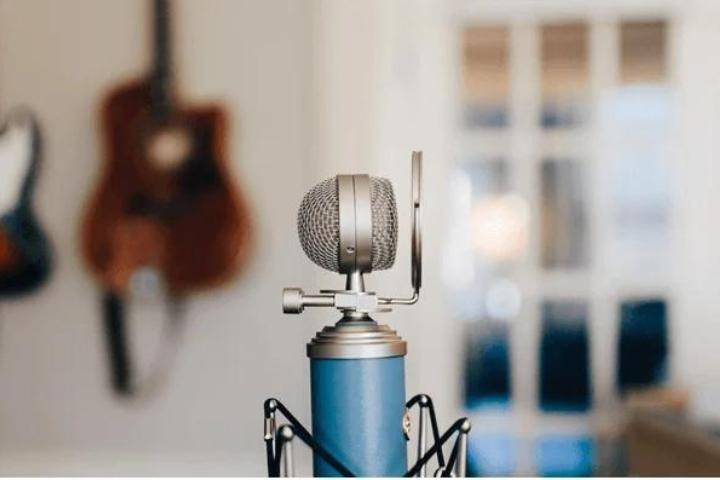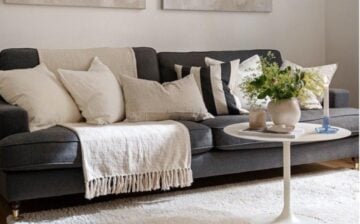
The environment we live in can shape and reflect our state of mind. This goes for everything, including designing a music room.
Think about it: when you live in a cluttered workspace, it’s easy for you to feel disorganized or lost. When you’re in an open, shared environment, it’s easier to collaborate or reach out socially.
So if you’re in the market to design your very own music room, it’s worth remembering that you can’t make your decisions too lightly! Because your space influences your motivation and inspiration as you rehearse, you’ll need to shape your music room with care. As you start considering how to design your music room, check out these creative interior design ideas to get inspired.
1. Make Your Instrument the Star
When it comes to both inspiration and visual appeal, you can’t go wrong with making your instrument the star of the show. Depending on what you play, you’ll have a number of options to work with.
For guitar fanatics, especially those with multiple instruments, creating a wall display can add both functional storage and a beautiful visual to any home music room. To do this, you’ll need to grab some sturdy wall mounts, but make sure to pick a high-quality brand to ensure that your instrument stays where it should be.
If you play the keys, let your piano act as the room’s main focal point. When you’re setting up your new space, you may need to give your piano movers instructions on where or how you want it arranged, but a solo piano at the center of the room can be a great conversation piece—as well as an incentive to play more often!
Don’t be afraid to add instruments you don’t normally play. Bringing in a range of instruments can help you start practicing with those elusive ones you’ve been meaning to pick up, and it can also encourage impromptu jam and practice sessions when you have company over.
2. Transform Old Instruments Into Functional Tools
If you’ve been playing music for years, chances are that you’ve collected a horde of older instruments that are past their prime. Whether you’ve kept them for sentimental reasons or picked them up for cheap, consider transforming them into functional tools or workspaces for your room.
Make a shelf out of an old acoustic guitar, turn an old snare drum into a planter, or make a vase out of a clarinet. With a bit of creativity, the possibilities are endless—and they’ll add some musical flair to your instrument room.
3. Show Off Your Musical Memorabilia
If you’ve amassed a stellar audio collection over the years, why not display it to the world? It’s easier than ever to display old vinyl records, and many vinyl mounts and stands make it easy to change out your display or remove an album to play it at any time.
For larger collections, consider investing in bookshelves to house and organize your CD or vinyl collections as well.
Gig and band posters can also be great ways to show off your musical tastes as wall art. If you have a collection of odd items—like tickets, guitar picks, novelty figures, or signed objects—you may also want to consider finding a memorabilia case to house and display them to the world. Done well, it can even add a classy, museum-inspired feeling to the room as a whole!
4. Add Some Soundproofing
Beyond the visuals of your music room design, it’s a good idea to consider one practical investment you may want to make: soundproofing.
For home music rooms, soundproofing can be an absolute must, especially if you don’t want to disturb your family members or housemates with your practice.
Depending on your budget and the volume levels of your practice, you’ll have two main options here.
First, you can create easy DIY soundproofing by using egg boxes on walls or making your own acoustic panels—which is easier than it sounds! You can also make the time for a simple soundproofing best practice: make sure there are soft textiles to absorb sound, not just hard ones that bounce the sound off. For this, everything from heavy curtains to carpets to chair pillows can help.
For more intensive soundproofing to cover louder rehearsals, you may want to invest in serious equipment. From soundproof door seals to hanging baffles, getting your hands on professional-quality tools can make a big difference in the amount of sound that escapes your room.
5. Make Space for Creativity
If you like writing your own music as much as you enjoy playing, finding ways to encourage creativity is a must.
One great way to do this is by incorporating a whiteboard or chalkboard wall into your workspace. This full-sized tool can help you with everything from jotting down lyrics to writing out bars of your next song. Plus, with plenty of room to doodle or write notes, it’s an easy way to personalize your room!
If you’ve set up a desk with your musical equipment, find ways to keep your music notebooks or blank paper handy for easy access when you get an idea. Bulletin boards in the area can also help capture your thoughts or inspirations.
Design Your Music Room Ideas With Care
Whether you play as a hobby or music is your career, the music room ideas above can help you create a fun and visually appealing space to practice. Your space might vary from a traditional design to an eclectic one, but the tips above can help you balance aesthetics with inspiration as you rehearse. Get started today to create the perfect studio for your needs!
Looking for more helpful home design tips? Check out our other posts for additional insights.
We hope you found this blog post 5 Creative Interior Design Ideas for Music Rooms, useful. Be sure to check out our post Nurturing a Sense of Home: Decor to Incorporate in Your New House for more great tips!
Have Experience in the Moving Industry? Want an Additional Income Stream? Work With All Around Moving!
We help you start a new career or create a side income. Click here to learn more.





